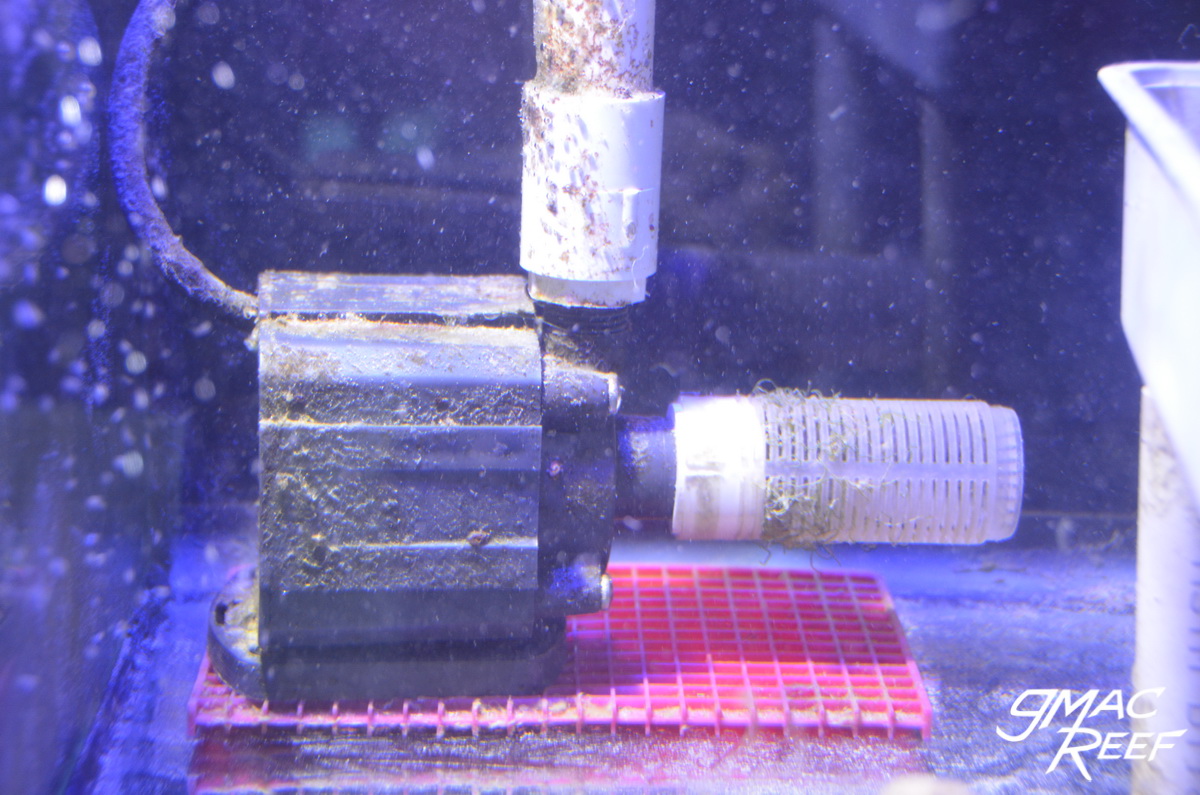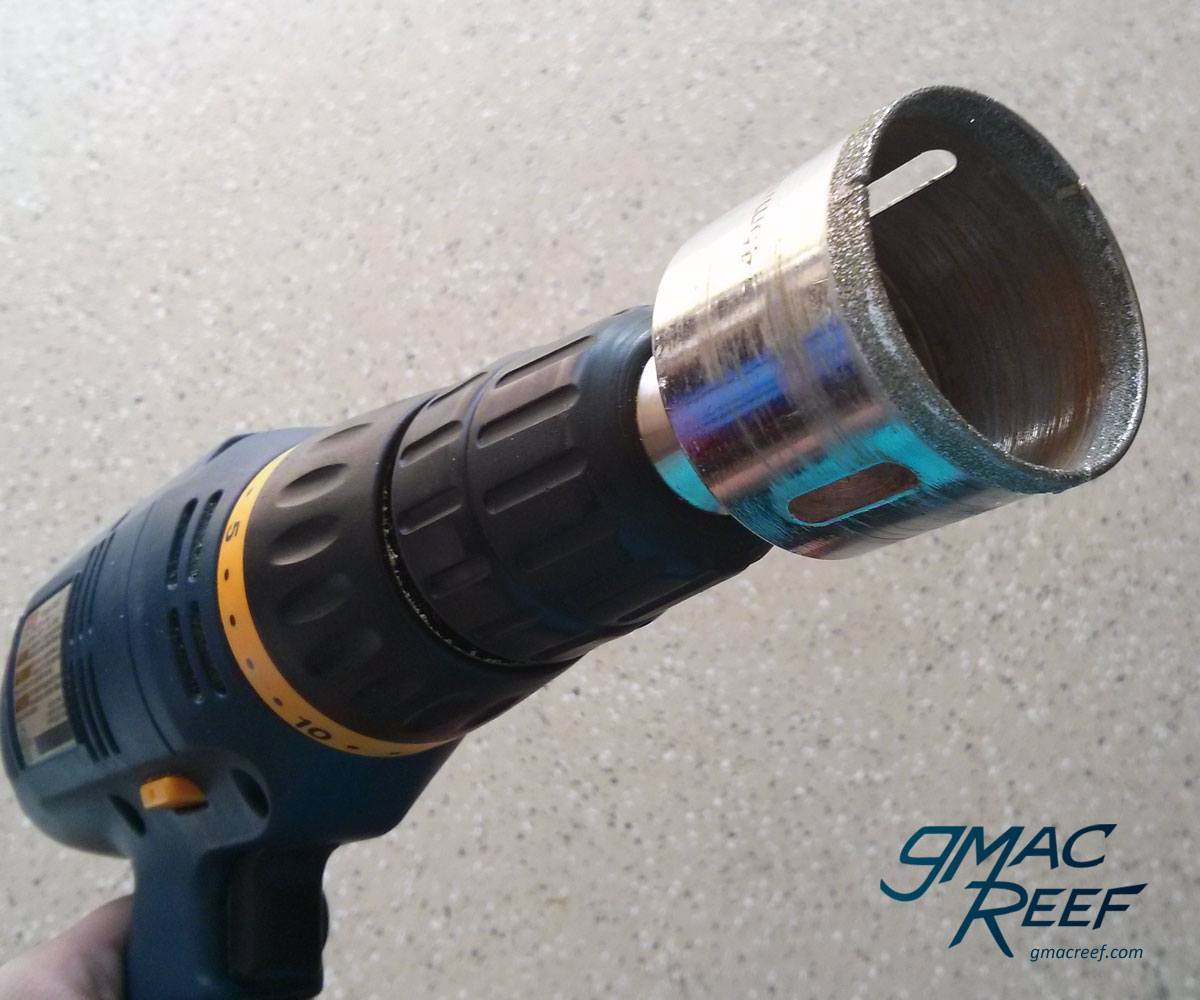Choosing the correct return pump is important for many reasons. Most of the time, you’ll have a hard time returning a pump that you have used where you bought it, so it’s best to choose wisely the first time.
First, The Basics that everyone should know:
- The return pump runs 24 hours a day
- A return pump on a saltwater tank is often a critical piece of equipment in terms of the life support system
- The pump must be made specifically for saltwater use
Doing some research on reef forums is a good place to start. Start by searching tank build threads, and looking at similar tanks to what you are designing. See what size of tank and sump they have, what kind of mechanical filtration that they use, and then what pump they are running. That will give you a few ideas to start with.
Another good source of info to look up the flow rate vs. head height Chart. This is commonly available on most return pump manufacturer websites. This chart will give you an estimate of what model you should consider. It’s worth noting though that these charts don’t account for pipe size or fittings and you won’t know the true flow until you measure it in your own house. A good way to make sure you don’t lose flow is to use a decent diameter pipe for your return line and don’t use barbed fittings.
Although I am not sure how current it is, another useful thing to try is Reef Central’s handy Pump Calculator –
Return Pump Calculator
Considerations
- What is the head height? – The vertical distance between the pump and the outlet, usually the top of the display tank
- What is the rate of turnover that I want? 3X? 5X? 10X? This is a large factor in your decision because there isn’t really a definitive answer on how much flow needs to run through the system every hour. There are differing schools of thought that may influence your decision. More detail here: What is the ideal Flow Rate of Turnover through the Sump?
- Do I want to spend more on a very quiet pump? This can depend on where the tank is located
- Can my overflow safely handle the amount of flow that the pump will flow?
Plumbing size
When plumbing a return pump, you should generally use the diameter of pipe that the pump is made for (as in don’t downsize the pipe) then you will not reduce the pressure or throughput of the pump at all. You also generally don’t want to go with less than 1″ PVC for a return line (or anywhere in an aquarium system if you can avoid it). See this post for more info: Reef Aquarium Return Line Plumbing – A How-to Guide
Plumbing Type
There are a few types of pipe that you can use on your return line and other plumbing. They are all covered in this page: Suitable Pipe Materials for Plumbing Reef Aquariums
What about dialing back flow with a valve?
Sometimes you’ll find yourself with a pump that is too large, and you have to find a way to lessen the flow coming out of it. Restricting it with a valve is one option, but it can make it run louder and possibly create more heat or shorten it’s life.
All you are doing is effectively adding more head pressure by restricting it. A better strategy can often be to get a smaller pump that will be more efficient. Since the pump runs 24/7, this can add up to a lot of energy savings in the long run.
Reducing Excess Noise
When looking for something quiet, just remember — it’s a relative measurement. You won’t really know how loud a pump is until you install it and turn it on.
Reduce Vibration
When you install the pump, there are a couple tricks you can use to make it run quiet.
Vibration can be one of the more annoying sounds your tank can make, and the return pump can often be the culprit. Placing a soft surface under the pump helps with this a lot, so vibration doesn’t transfer to the glass.
Vibration can also transfer into the pipes, and then onto the stand or whatever else they touch. Rigid pipe will be the worst for this because there is no dampening at all.
On the contrast, flexible tubing will transfer almost none of this vibration. Some people opt to install a short run of silicone tubing from the pump to the main run of plumbing to completely eliminate it.
Flex-PVC won’t transfer too much of the vibration, and has an advantage over any type of tubing. It doesn’t require any barbed fittings, so there are no friction-losses through the pipe. The reason that tubing has these losses is that the fittings insert inside the tubing and constrict the diameter. More info about pipe versus tubing here: Suitable Pipe Materials for Plumbing Reef Aquariums
Quick Tip – For around $5.00, you can pick up a silicone trivet / pot holder from a kitchen goods store to place under your return pump. This will dampen vibrations transferred to the sump and cabinet.
Protecting the Pump
Most return pumps will come with a strainer for the intake. This should always be in place to prevent objects from being pulled into the intake of the pump and stopping it’s flow.
Pumps such as the Danner Mag Drive line (shown in pic) will also come with a foam intake guard. The foam can quickly become clogged and dirty, so many people don’t use it. Here I have swapped the stock strainer with one that has a finer mesh.
Segmenting your PumpReturn pumps can be quite strong, so any fish in the sump should not be in the same chamber as the pump. Once sucked against the intake, they often can’t escape. For this reason many people avoid having fish in their sump at all.
Backup Plans
A return pump is something that is nice to have a backup of. It is a critical part of the system.
Having the ability to swap out pumps and get the system back online has a few benefits. You can take your time while you do maintenance such as disassembling the pump for soaking. In the event of a malfunction, you won’t have to worry about a surprise trip to your LFS to find a replacement.
Your backup pump just needs get you by until you can replace the primary one, and can even be smaller.
Make an informed decision
If you figure out your target flow rate based on your head height and desired rate of turnover, you can get the right pump.
One thing also bears mentioning because I have seen it a lot. If the person telling you what pump to get is also the same person selling it to you, take their advice with a grain of salt. You may walk away up with the pump that they make a few extra bucks off but is a little bigger and louder than necessary.






This is a great write up, and something I wish I’d had the first time I set up a sump.
Great article for a saltwater novice like me.
Thanks, this is a part of setting up your first sump system that a lot of novices find difficult to get right the first time.
Hi,
if I use 2 pumps for return, because I want 2 separate return locations and also at least one pump working if one should fail while I’m not home, do I double their gph output for a total?
If they are the same model then yes.
This is an awesome site. I am a beginner with a 90 gallon aquarium and your site is the only site I’ve came across with actual step by step instructions on setup. Thank you so much for taking the time out to make this site. I know a lot of folks would agree that hiring someone to come out and do it can be quite expansive. So again I thank you..
You are welcome – glad to hear it.
This is a great article, something else worth consideration with all the new pumps coming to market is the cost of operation. Many DC pumps offer exceptional GPH with even less energy consumption. Considering the return pump is running 24/7 its always nice to cut back on energy costs when possible. Of course it depends on the purchase price of the pump if it is worth the investment.